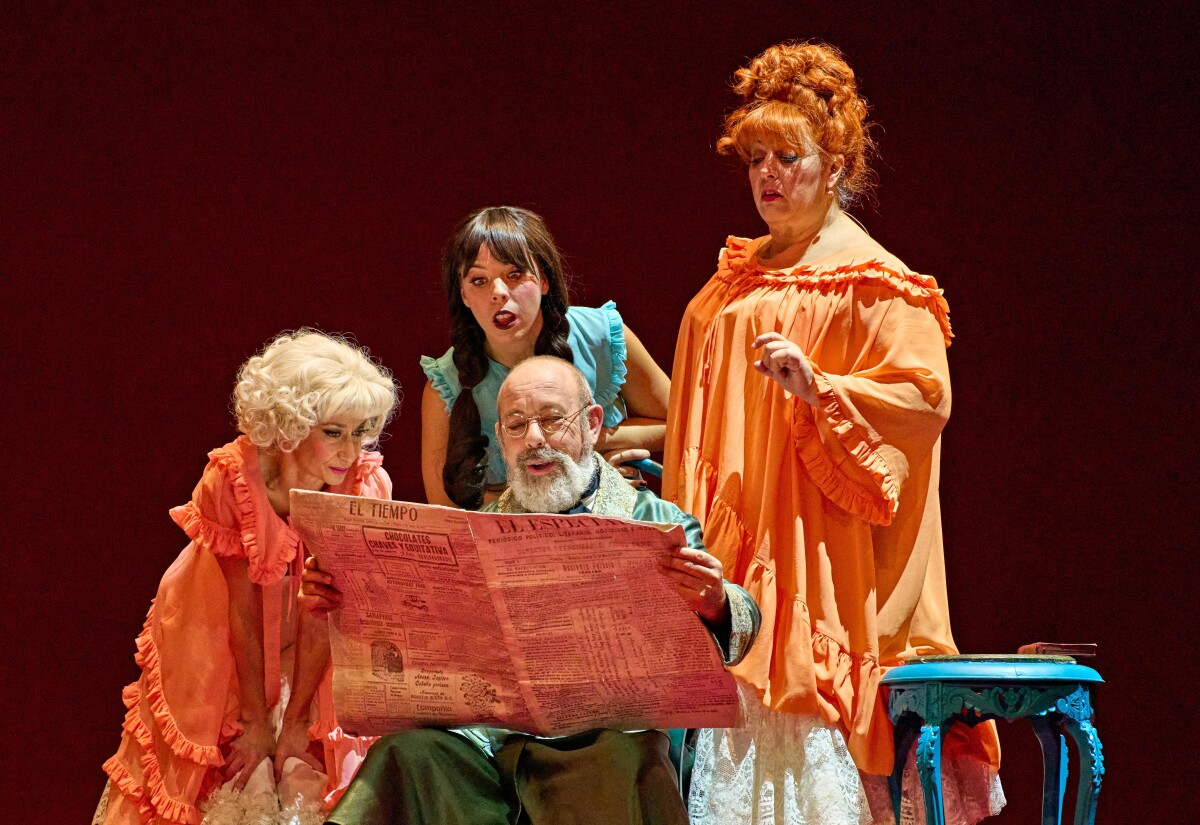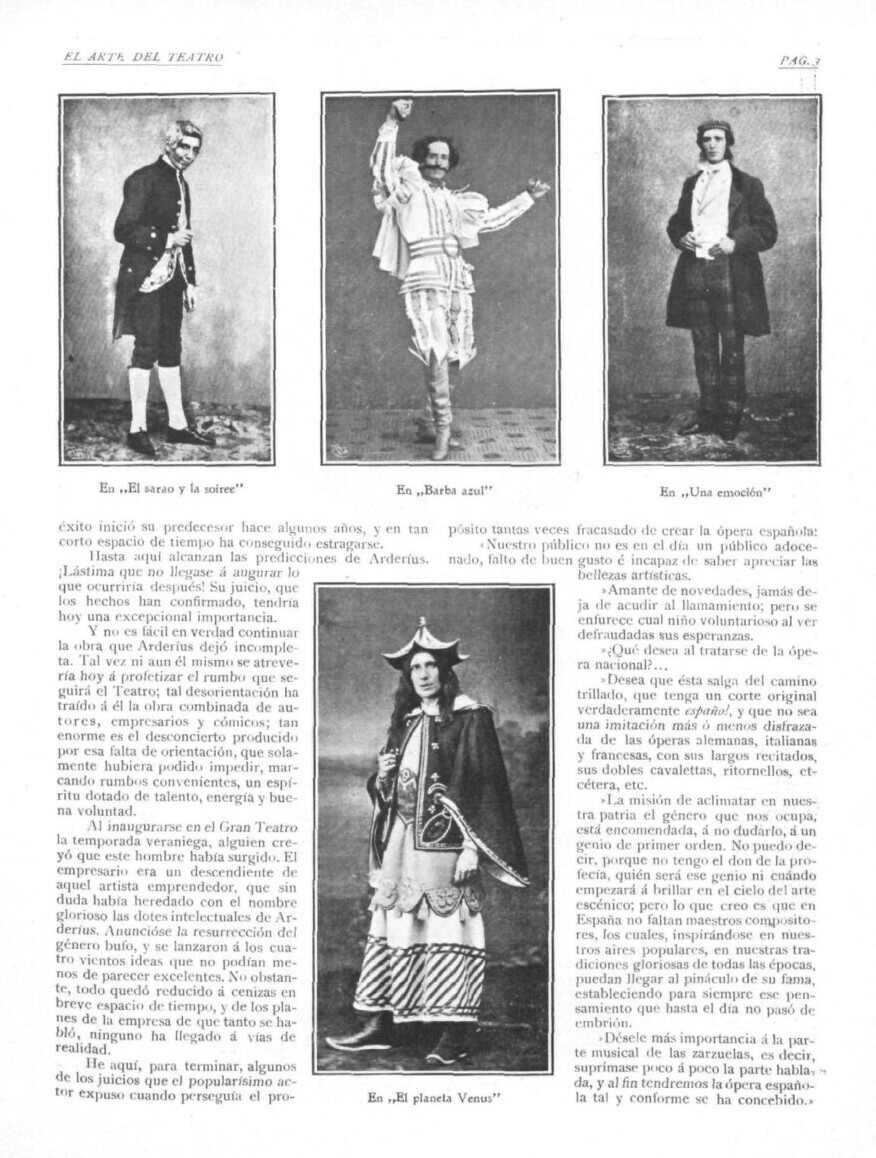Ignacio Jassa Haro
Operetta Research Center
22 December, 2023
The Teatro de la Comedia in Madrid as the headquarters of the CNTC (the National Classical Theatre Company) is an authentic national temple of the dramatic art of the golden centuries in Spain. This Christmas, this historic Madrid venue is hosting a musical theatre show that goes beyond the usual generic and temporal limits of the institution by recovering the memory of Francisco Arderíus (1836-1887), one of the great protagonists of Spanish operetta.

Francisco Arderíus in Los sobrinos del capitán Grant (1877). Portrait by R. Areñas, Barcelona. (Photo: Institut del Teatre-Centre de Documentació and Museu de les Arts Escèniques, Barcelona).
Arderíus has traditionally been labelled the Spanish Offenbach, since he imported his comic operas and integrated them into the zarzuela repertoire, thus bringing new wisdom to that tradition of popular musical theatre. But his figure is much more complex: he was a singer, actor, stage director, publicist and impresario of the theatre and other entertainment businesses.
Traditional musical historiography has underestimated the figure of Arderíus based on his eminently commercial vocation, his brilliant but brief career and the apparent corruption of the national theatrical tradition through the importation of foreign elements. Today, however, we can see in him – and this theatrical production vindicates this – a true pioneer in a modern conception of the spectacle, who acted as a catalyst for projects that brought together the best creators and performers of the politically convulsed Spain of the 1860s to 1880s.
In spite of temporal or geographical distances, parallel examples come to mind of entrepreneurs such as P. T. Barnum in the USA or the Marischka brothers in Vienna (the latter are very topical this season thanks to the exhibition that the Vienna Theatermuseum is dedicating to them).

Francisco Arderíus, portrait by R. Areñas, Barcelona. (Photo: Ignacio Jassa Haro Collection)
To celebrate Arderíus the CNTC has chosen the zarzuela Los órganos de Móstoles. This 1867 title, which opened the second season of the Compañía de los Bufos Madrileños, has music by their fetish composer, the now almost completely forgotten José Rogel. The libretto was signed by a much better remembered creator, Luis Mariano de Larra (author of great titles of the repertoire such as El barberillo de Lavapiés or mythical Castilian adaptations of French or Viennese operettas such as Las campanas de Carrión [Les cloches de Corneville], 1877 or Boccaccio, 1882).
Stage director Rafa Castejón has framed the performance of this zarzuela with an agile and evocative dramaturgy that explains to today’s audience who Arderíus was. He himself plays the role of Don Juan Tenorio, a parodic character with echoes of Spanish and universal dramatic tradition who acts as a deus ex machina to settle the hilarious conflict of a father who wants to publicly auction off his three daughters in order to marry them off.

Scene from “Los órganos de Móstoles”. (Photo: Sergio Parra-Compañía Nacional de Teatro Clásico)
The musician and actor Antoni Comas, as well as playing one of the aspiring husbands, has made the musical arrangements, distilling the copious original score to its essentials and reducing the writing for orchestra and chorus to a piano accompanying the solo voices.
Although this change was imposed by production constraints (which did not contemplate the inclusion of instrumentalists or chorus), the music is of enormous importance in the staging. Nevertheless, it is the theatrical text that is the driving force of the show, and the way it is interpreted and incorporated into the staging has been done with the same care with which the CNTC treats any text from the Golden Age. Luis Mariano de Larra and José Rogel, and with them their mentor Francisco Arderíus, have thus succeeded in being vindicated as true classics of Spanish and universal culture.

Photo report from the magazine El arte de El Teatro (1906) with Francisco Arderíus in Un sarao y una soirée (1866), Barba Azul [Barbe-bleue] (1869), Una emoción (1859) and El planeta Venus (1858). (Photo: Biblioteca Nacional de España, Madrid)
A small but attractive exhibition in the foyer of the Teatro de la Comedia traces the career of Los Bufos Madrileños, the operetta company of Francisco Arderíus, as a culmination to the joyful experience of the audience.

Er …. who?